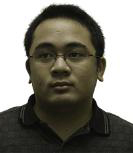For too many households around the world, living paycheck-to-paycheck is a luxury out of reach. In order to deal with small and irregular cash flows, households earning $2 a day or less must be creative in how they manage to put food on the table every night and pay for other assorted and regular necessities. A glimpse at their balance sheets or assets doesn't provide a sense of their creativity. The turnover in cash flows from savings to loans and back again doesn't register; there are far more transactions per day that don't ultimately end up on a balance sheet. Not that anyone has time to write things down -- until recently.
In researching for Portfolios of the Poor, a quartet of co-authors actually did manage to write everything down -- every wage earned, every payment, every deposit, every loan, every financial transaction. Using interviews with more than 250 households twice a month for about a year each, the writers constructed detailed financial diaries documenting how to live on $2 a day. The first and most important conclusion was that when these households do receive income, very rarely is it ever spent as soon as it is earned. Human creativity reaches a high watermark in how these households use almost entirely informal financing to smooth out consumption for daily needs, insure against risk, and save for major expenses:
... even for the poorest households, a surprising amount of income gets managed in this way--diverted into savings or used to pay down loans. In the process, a host of different methods are pressed into use: storing savings at home, with others, and with banking institutions; joining savings clubs, savings-and-loan clubs, and insurance clubs; and borrowing from neighbors, relatives, employers, moneylenders, or financial institutions. At any one time, the average poor household has a fistful of financial relationships on the go. (Collins, D., Morduch, J., Rutherford, S., Ruthven, O. Portfolios of the Poor: How the World's Poor Live on $2 a Day. Princeton: Princeton University Press, 2009.)
The resulting portrait of the poor provides priceless insight into the possibilities of institutional reform. Since roughly 40 percent of the world lives on $2 a day or less, institutions targeting their financial needs could literally do a world of good, with a long-term impact on daily life. Institutional reform pushes financing for the poor beyond microfinance. It means deconstructing the framework of structural sin -- the laws and regulations excluding that 40 percent from the same formal financial structures that benefit everyone else.
The portfolios of the poor today comprise mostly informal financing despite wanting more reliability, privacy, and transparency because informal finance offers degrees of flexibility and scale that formal financing isn't able to offer. They would also prefer to earn interest on what they save, rather than storing savings at home or paying someone to hold their savings someplace safer. Formal financing could provide more flexible and scalable services to the poor if provided with updated financial regulations embodying input from local banks hoping to serve poor households. Poorly enforced, outdated, or non-existent regulations cloud the waters for local banks, limiting their reach despite their desire to do more.
Financial regulations aren't the most bankable of causes, but Portfolios of the Poor illustrates how poor households bear the brunt of poor financial regulation, in good economic times as much as bad. Earning negative interest for someone to hold your savings sounds outrageous, but for 40 percent of humanity it's what the world offers them, financial crisis or not. It's a structural sin of worldly proportions. Forty percent is a lot to exclude from the interest-paying global financial system that could also use some loanable funds to get out of today's crisis. Is 40 percent of humanity a bankable cause?
 Oscar Perry Abello works in the Global Programs Department at the Center for International Private Enterprise, which has worked for 25 years to strengthen democracy through market-oriented reform. Oscar graduated from Villanova University in 2008 with a B.A. in Economics and a minor in Peace and Justice Studies, and can be reached at oabello@cipe.org. Read more about microfinance as an effective tool for international development in Sojourners magazine.
Oscar Perry Abello works in the Global Programs Department at the Center for International Private Enterprise, which has worked for 25 years to strengthen democracy through market-oriented reform. Oscar graduated from Villanova University in 2008 with a B.A. in Economics and a minor in Peace and Justice Studies, and can be reached at oabello@cipe.org. Read more about microfinance as an effective tool for international development in Sojourners magazine.
Got something to say about what you're reading? We value your feedback!